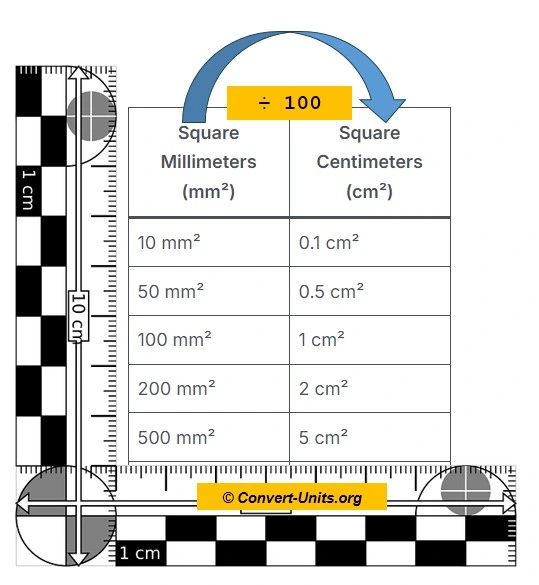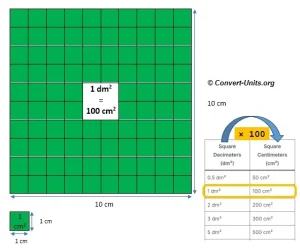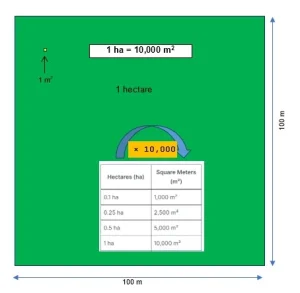
mm² to cm² Conversion Calculator
Click on the following link if you want to convert square centimeters to square millimeters – cm² to mm²
History
The metric system was established in France in the late 18th century to standardize all measurements.
In this system, every step between units is based on powers of ten. That means 1 centimeter = 10 millimeters, but when converting area, the factor must be squared:
(10 × 10) = 100
So, 1 cm² = 100 mm².
Therefore, to convert from square millimeters to square centimeters, you divide by 100.
If you want to explore more about metric conversions and their origins, check out NIST’s SI Units guide
Common Usage
- Square millimeters (mm²) are used for small surfaces, like the cross-sectional area of wires, screws, or mechanical parts.
- Square centimeters (cm²) are more practical for larger small areas, such as skin measurements, printed labels, or small panels.
For example, the cross-section of a typical electrical wire might be 10 mm², which equals 0.1 cm².
Conversion Formula
The relationship is simple:
cm² = mm² ÷ 100
Example:
Convert 250 mm² to cm².
250 ÷ 100 = 2.5 cm²
So, 250 square millimeters equal 2.5 square centimeters.
Conversion Table
| Square Millimeters (mm²) | Square Centimeters (cm²) |
|---|---|
| 10 mm² | 0.1 cm² |
| 50 mm² | 0.5 cm² |
| 100 mm² | 1 cm² |
| 200 mm² | 2 cm² |
| 500 mm² | 5 cm² |
| 1,000 mm² | 10 cm² |
| 2,000 mm² | 20 cm² |
| 5,000 mm² | 50 cm² |
| 10,000 mm² | 100 cm² |
| 20,000 mm² | 200 cm² |
Interesting Facts
- The area of a standard pen tip is around 1 mm².
- 1 cm² has 100 times more surface than 1 mm² – that shows how fast the area increases with squared units.
- Medical imaging and tattoo design often use cm² for surface estimates, while engineering uses mm² for precision.
Frequently Asked Questions
1. How many square millimeters are in one square centimeter?
100 mm².
2. How do I convert mm² to cm² quickly?
Divide by 100.
3. Where is mm² used most?
In engineering, electronics, and metalworking.
4. Why is the conversion squared?
Because area involves two dimensions (length and width).
5. Is 1 mm² bigger or smaller than 1 cm²?
Much smaller: 1 cm² equals 100 mm².



